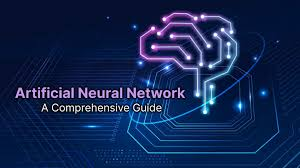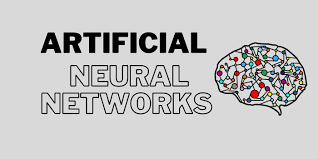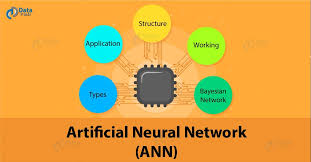Introduction to Artificial Neural Networks (ANNs): A Beginner’s comprehensive Guide 2024

Introduction
Artificial Neural Networks (ANNs) are a fundamental building block of modern AI. They mimic the way the human brain processes information, allowing machines to learn from data, recognize patterns, and make predictions.
🚀 Why Learn ANNs?
✔ Powerful Learning Capabilities – Used in deep learning, computer vision, and NLP.
✔ Handles Complex Data – Works well with structured and unstructured data.
✔ Drives Modern AI – Forms the core of self-driving cars, recommendation systems, and medical diagnostics.
In This Guide, You’ll Learn:
✅ The Intuition Behind ANNs
✅ How to Build an ANN
✅ How to Make Predictions with ANNs
1. What is an Artificial Neural Network (ANN)?

An Artificial Neural Network is a computational model inspired by the biological neural networks of the human brain. It consists of layers of interconnected neurons that process data and generate predictions.
🔹 Key Components of ANNs: ✔ Neurons – Basic processing units.
✔ Weights & Biases – Control the strength of neuron connections.
✔ Activation Functions – Apply non-linearity to the network.
✔ Layers – Organize neurons into structured networks.
🚀 Example:
An ANN trained on handwritten digit recognition can automatically identify numbers from images like a human would.
✅ Why Use ANNs?
✔ Can model complex relationships in data.
✔ Self-learning – Adjusts parameters to improve predictions.
✔ Performs well with large-scale datasets.
2. The Structure of an Artificial Neural Network

An ANN is composed of three main layers:
| Layer | Function |
|---|---|
| Input Layer | Receives raw data (e.g., images, text, numbers) |
| Hidden Layers | Extracts features and detects patterns |
| Output Layer | Produces predictions (e.g., classification, regression) |
🔹 Example: Predicting House Prices
A neural network can predict house prices using inputs like:
✔ Number of bedrooms
✔ Square footage
✔ Location
The network processes these features through multiple layers to predict the final price.
✅ Key Insight:
More hidden layers enable the network to capture complex relationships.
3. How to Build an ANN

Building an ANN involves several key steps:
✅ Step 1: Define the Architecture
- Choose the number of layers and neurons per layer.
- Select activation functions (e.g., ReLU, Sigmoid).
✅ Step 2: Initialize Weights & Biases
- Weights start with random values and are optimized during training.
✅ Step 3: Forward Propagation
- Data flows through the network, layer by layer.
- Each neuron applies a weighted sum and activation function.
📌 Mathematical Representation: For a neuron with input X, weights W, bias b, and activation function f:Z=W∗X+bA=f(Z)Z = W * X + b A = f(Z) Z=W∗X+bA=f(Z)
✅ Forward propagation calculates predictions step-by-step.
4. Training an ANN Using Backpropagation
To improve model accuracy, we use backpropagation:
✔ Calculate the Loss Function – Measures how far predictions are from actual values.
✔ Compute Gradients – Determines the direction to update weights.
✔ Use Optimization Algorithms – (e.g., Gradient Descent) to minimize errors.
🚀 Example: Training an ANN for Image Recognition
1️⃣ A neural network predicts whether an image is a cat or dog.
2️⃣ The model’s initial predictions are inaccurate.
3️⃣ Backpropagation adjusts the weights to improve accuracy.
4️⃣ After several iterations, the network correctly classifies images.
✅ Key Insight:
The more data the model trains on, the better it performs.
5. Making Predictions with an ANN

Once the network is trained, we can use it to make predictions.
✅ How to Predict a Single Observation
1️⃣ Input new data into the trained network.
2️⃣ Pass data through hidden layers (Forward Propagation).
3️⃣ Generate an output prediction.
📌 Example: Predicting Customer Churn A company wants to predict if a customer will leave based on: ✔ Customer Age
✔ Account Balance
✔ Previous Purchases
🔹 The ANN analyzes historical data and predicts whether the customer is likely to churn.
✅ Prediction Output Example:
✔ Output = 0 (Customer stays)
✔ Output = 1 (Customer leaves)
6. Real-World Applications of ANNs
Artificial Neural Networks are used in various industries:
🔹 Healthcare:
✔ Disease prediction (AI-powered diagnostics)
✔ Medical image classification (X-rays, MRIs)
🔹 Finance:
✔ Fraud detection in credit card transactions
✔ Stock market forecasting
🔹 E-commerce & Marketing:
✔ Customer segmentation for personalized recommendations
✔ Dynamic pricing optimization
✅ Future Impact:
ANNs are transforming self-driving cars, robotics, and AI assistants.
7. Best Practices for Building ANNs
✔ Use Dropout Regularization – Prevents overfitting.
✔ Normalize Data Inputs – Speeds up learning.
✔ Choose the Right Activation Function – ReLU for hidden layers, Softmax for classification.
✔ Experiment with Different Architectures – More layers can improve learning.
✔ Monitor Model Performance – Use accuracy, precision, recall metrics.
🚀 Example: Optimizing a Speech Recognition ANN
- Adding more neurons improves accuracy.
- Using batch normalization speeds up training.
- Selecting the right optimizer (Adam, RMSprop) enhances performance.
✅ Key Takeaway:
Fine-tuning ANNs requires experimentation!
8. Conclusion
Artificial Neural Networks power modern AI applications and enable machines to solve complex problems. Understanding ANN structure, training, and optimization techniques is key to building high-performing models.
✅ Key Takeaways
✔ ANNs mimic the human brain to process and learn from data.
✔ Backpropagation & optimization improve model performance.
✔ ANNs are widely used in healthcare, finance, and AI applications.
✔ Experimentation is crucial to fine-tune neural network performance.
💡 How are you using Artificial Neural Networks in your projects? Let’s discuss in the comments! 🚀
Would you like a step-by-step tutorial on implementing ANNs in Python? 😊